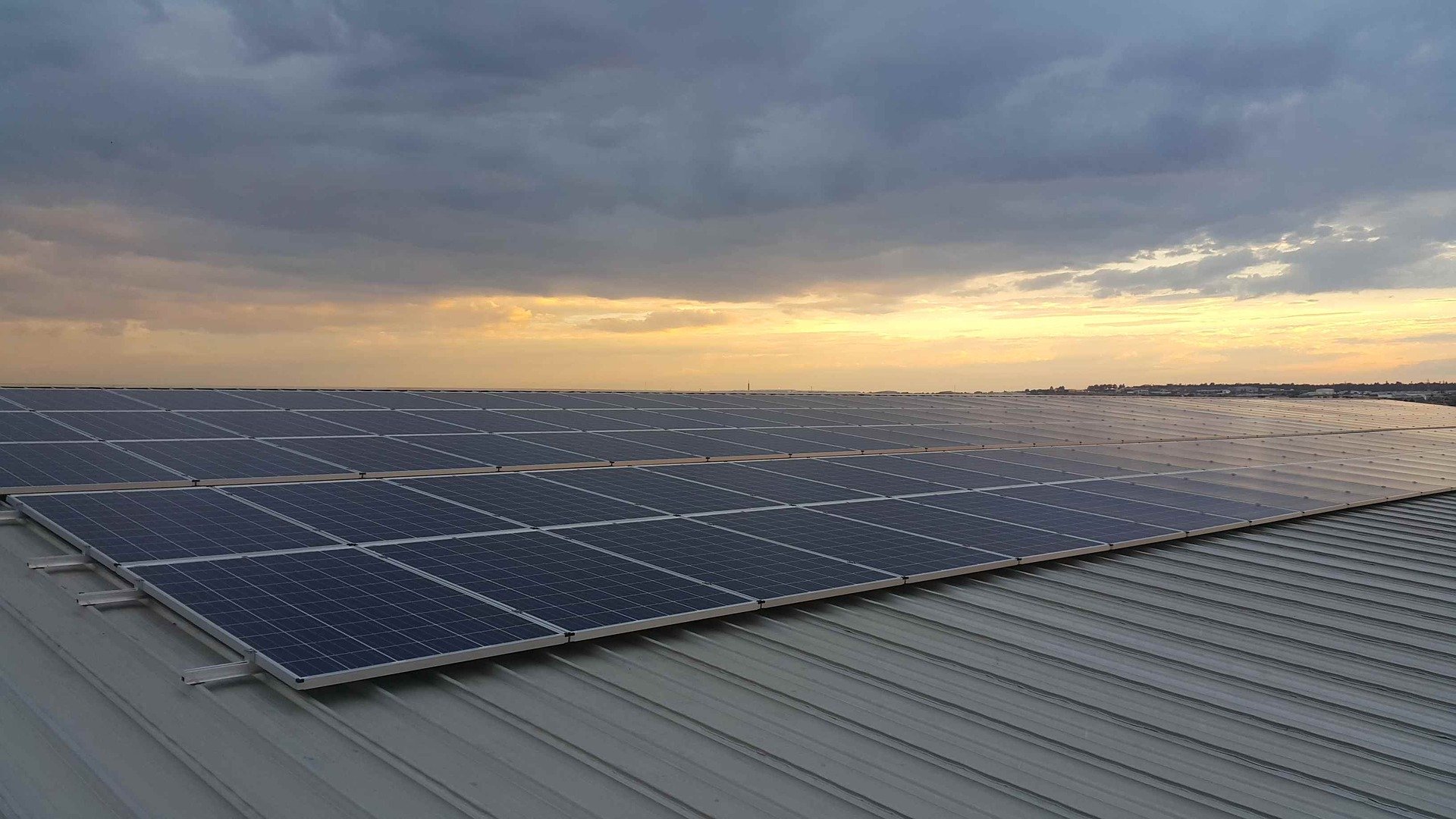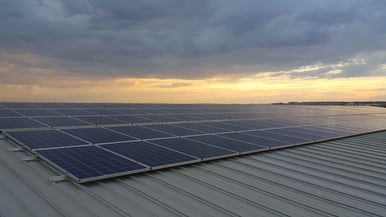
The green building movement has exploded since the turn of the century, pushing the market close to the $100 billion mark.
Driving the standardization of this movement is the Leadership in Energy and Environmental Design (LEED®) rating system. According to the U.S. Green Building Council, “LEED buildings have faster lease-up rates and may qualify for a host of incentives like tax rebates and zoning allowances. Not to mention they retain higher property values.”
The latest version of the LEED checklist is broken down into eight categories—location and transportation, sustainable sites, water efficiency, energy and atmosphere, materials and resources, indoor environmental quality, innovation, and regional priority.
While the LEED rating (scored out of 110 points) is made up of credits from all aspects of construction, quality green roofing can contribute up to 20% of your points.
If you’re looking to boost your LEED score, here are the different ways that green roofs can help.
The 4 LEED Categories that Green Roofs Improve
Green roofs don’t contribute to all eight of the LEED categories. However, every point counts when you’re aiming for Platinum LEED certification.
As you design your green roof projects, keep these 4 LEED categories in mind to maximize your score.
1. Sustainable Sites
This category accounts for 10 points on the LEED scorecard and is dictated by your efforts—both during and after construction—to facilitate sustainability. There are four credits you can earn with a quality green roof:
- Site Development—Protect/Restore Habitat: Are you designing a vegetated roof surface? If so, you can earn a point here if the plants are native/adapted. Native plants protect the habitat because they don’t require irrigation or fertilizers.
- Open Space: Green building aims to create a high ratio of open space to development footprint. Generally, designing for 20%-25% vegetated open space can earn this point. Green roofs are a perfect opportunity to satisfy the requirement.
- Rainwater Management: Storm water design is a major component of roof construction and quantity control can earn points for your LEED score. When you design a roof with vegetation, pervious paving, and other impervious surfaces, you can better control storm water quality and meet LEED requirements.
- Heat Island Effect: Traditional roofing materials (asphalt, concrete) create thermal gradient differences that impact microclimates. Alternative surfaces and green roofing techniques can keep the roof’s solar reflective index (SRI) at an environmentally-friendly level, earning your LEED points.
The Brooklyn Botanic Garden Visitor Center offers an example of a LEED-certified living green roof, housing over 40,000 plants that include perennials and natural bulbs.
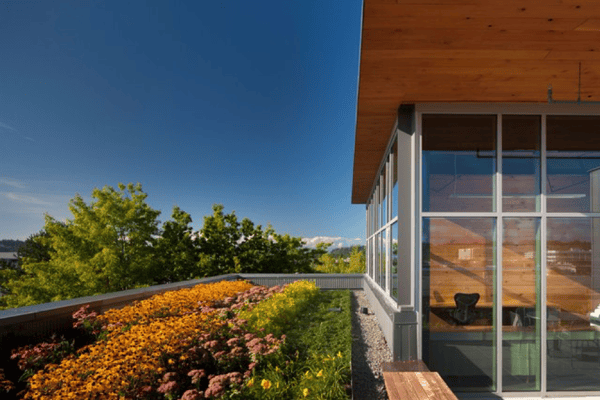
2. Water Efficiency
This category accounts for 11 LEED points. While most of those (6) are covered by indoor water usage, you can earn points via water-efficient landscaping on your green roof.
The key is to minimize (or eliminate) any need for irrigation on vegetated aspects of the roof design. When irrigation is absolutely necessary, make sure you aren’t wasting potable water with a drip design or by using reclaimed water.
At the LOTT Clean Water Alliance Regional Services Center in Washington, there are two green roofs that contribute to the building’s LEED certification. Their use of reclaimed water for irrigation meets certification demands for minimal potable water usage.
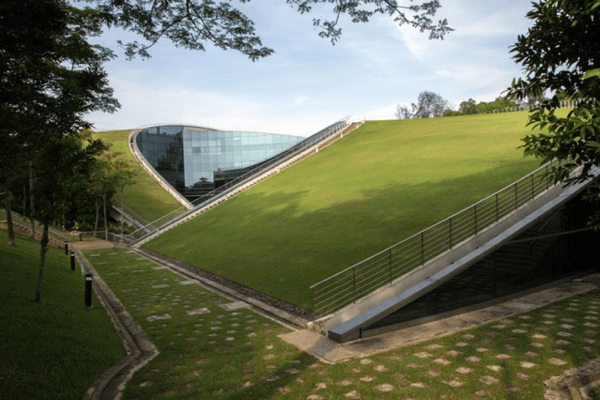
3. Energy and Atmosphere
Roof design plays a critical role in energy efficiency. To improve your LEED score within this 33-point category, make sure to achieve (at least) the minimum energy efficiency rating and show that roof performance will improve the building’s overall proposed rating.
The scorecard isn’t as specific in this category. Green roofs have the best chance of impacting credits for optimizing energy performance, which is worth 18 total points. Proper green roof design will take advantage of vegetation to reduce the overall energy demand of the building while also insulating against heating/cooling leaks.
In San Francisco, the California Academy of Sciences has a living green roof that’s sustains nearly 2 million plants as well as solar panels to increase energy efficiency.
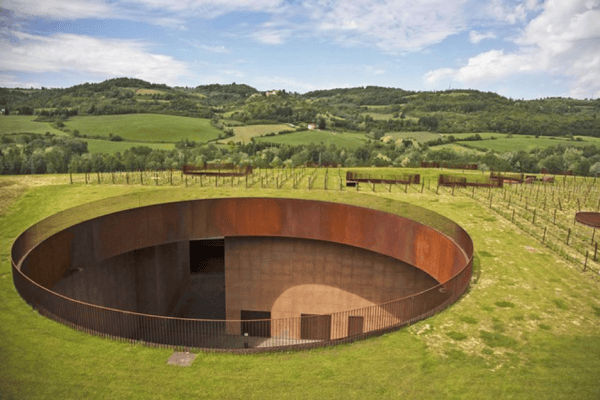
4. Materials and Resources
As important as roof design is, the actual materials you use to build it can unlock a sizeable chunk of the 13-point Materials and Resources LEED category. There are three credits you can earn as you build your green roof:
- Material Reuse: Rather than disposing of leftover building materials, reuse resources for your green roof. This helps you improve the building lifecycle impact as you reduce demand for new materials.
- Recycled Materials: If 10%-20% of your components (pavers, edge treatments, compost, etc.) are recycled from pre- and post-consumer materials, you can earn credits for your LEED score. Value is determined by multiplying recycled content weight by cost of assembly.
- Regionally-Sourced Materials: Depending on the overall value of the project, 10% to 20% of materials for the project must be manufactured within 500 miles of the property. Readily-available roofing materials offer a good opportunity to satisfy these requirements.
At the Ohio EPA Headquarters (The Lazarus Building), many components of the LEED-certified green roof are made of recycled materials. For example, the ballasted rail system is made of recycled plastic planters and many paver tiles are made of recycled car tires.
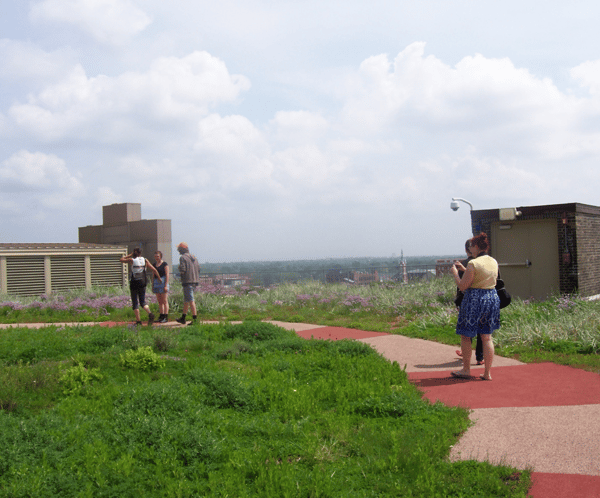
Don’t Take LEED Certification for Granted
The benefits of LEED certification shouldn’t be ignored by any building owner. Whether it’s time to replace a roof or you want to retrofit for a green roof, make sure you’re squeezing every LEED credit you can out of the construction.
To do so, it’s important to partner with the right construction company. That’s why we spend so many hours researching and developing products that meet the rigorous LEED standards.
Want to learn how we can maximize the LEED value of your green roof? Contact us today for more information.


